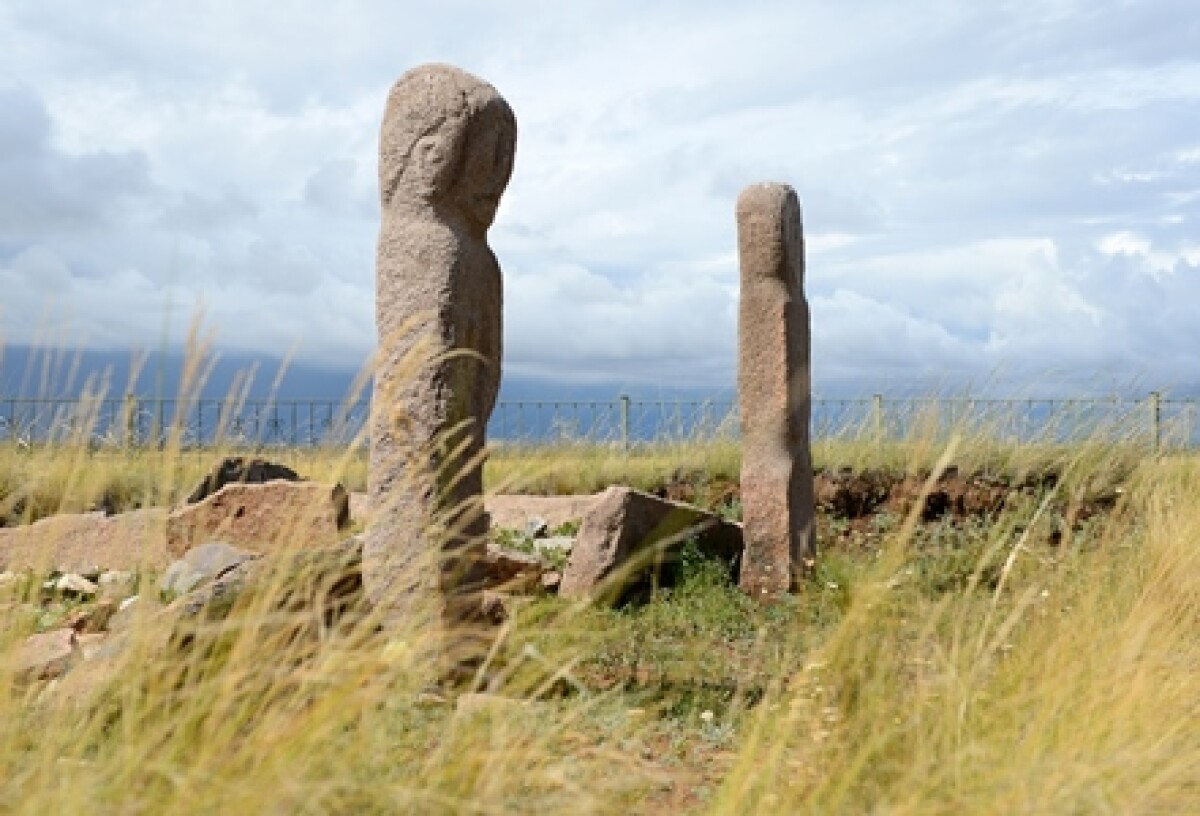
Old Turkic epoch (III, V, VIII cc.)
Main ancient monuments of Turkic written literature – writings “Kultgin” and “Tonyukok”. It is genuinely historical dastans (poems). They were created in the period of the Turkic khaganate and hold many descriptions of historical events. In these monuments are often met words, names of places, celestial objects, human names, prevailing in modern Turkic languages, in particular, in the Kazakh language. The history of affixes, word expressions in Kazakh goes deeply into the history of Old Turkic epoch.
.jpg) Middle Turkic epoch
Middle Turkic epoch
It is the epoch which consists of two periods: epoch of Karakhanids and Golden Horde. At the start of theses epochs among Turkic people started to spread Naiman writing as the Ancient Uigur writing.
Period of Karakhanids
At this time the Arabic culture prevails in world culture and conduced to the development of science and knowledge, literature and art. Islamic culture made an influence on culture, language of Turkic people. Into Turkic languages, including Kazakh intruded a number of abstractive notions such as galam, khakim, gylym, rakym, makhabbat, garish and others.
To the written works based on the Arabic graphics describing peculiarities of this period relate the poem by Yusup Balasaguni “Kuttatgu bilik” (“The base of welfare - knowledge”), comparative dictionary of Turkic languages by Makhmud Kashkari “Divan lugat at-turk” (“The collection of Turkic dialects”), the book of Akhmet Iugneki “Khibatu-l-khakaiyk”, “Akikat syiy” (“Respect of truth”), “Divan-i Khikmet” (“Book of wisdom) of Akhmet Yassawi.
This period grasps X-XII cc. To the works disclosing linguistic peculiarities of that epoch relate “Mukhabbat-name” (“Book of love”) Khorezmi, “Khusrau and Shirin” Kutba, “Kitab Gülistan Bi't-Türki”) Saif Sarai, “Kissai rabguzi”, “Tales of Rabguz about prophets” Rabguzi, one of the samples of Kipchak writing – dictionary “Codex Cumanicus”. This period grasps XII-XV century.
Artistic works of XV-XIX centuries strongly influenced the vocabulary of Kazakh zhyrau and poets. Particularly, literature artistic language filled with stable syllables and vivid word expressions of the speech. The written works of that period positively influenced the formation of written language, based on the Arabic graphics. Written language of Kazakhs taking the start since XV century, was used till early XX century and grew into the written language of people.
New Turkic period (from XV century to our days)
At the early stage of new Turkic period (XIV-XV cc.) majority of Turkic ethnoses, tribal unions started to form as the nation. In this period started to be formed the image of the Kazakh language as the language of people, nation.
All Kazakh tribes from Altai to Atyrau had common vocabulary, types of sentences, sound composition. In other words, at this time was formed the base of vernacular, national language.
In the primary stage of new epoch in the Kazakh society started to use Arabic writing, This type of writing appeared on the basis of language of written sources of the Golden Horde and was written on the rules of spelling of that period, that is it was not based on the sound system of vernacular language, colloquial language, in vocabulary there are many unknown Arabic, Persian words. However, with the course of time the elements of Kazakh, colloquial language started to intrude gradually into sound, colloquial system of the given language. Thus, in this time was formed Kazakh.
.jpg) Old Kazakh written language
Old Kazakh written language
Old Kazakh written language based on Arabic alphabet served in the period from XV century to early XX century. It was mainly used as the language of diplomatic correspondence of the Kazakh khanate. “Zhami at – tavarikh” (“Collection of chronology”) Kadyrgali Zhalairi, “Genealogy of Turkmens” Ablilgazy bakhadur khan relate to these samples of writing. .
To the samples of ancient Kazakh written language relate the works of Makhambet Utemisov, diplomatic notes of Abulkhair khan to the Empress of Russia Elizaveta, language of works of Ch.Valikhanov. The language of works of Murseit also can be related to the Kazakh written language. Old Kazakh written language laid the base of literature language.
Ibray Altynsarin started the genre of prose, scientific style, and Abai – publisim amd style of art literature, basing on norms of common language and verbal literature language.
Thus, they made contribution to the genre transformation of literature language.
Soviet period
Literature language turned into powerful means of education, into the language of cultural and spiritual heritage. He served in all the spheres of public life. Along with writers and poets, scientific and public activists also took active part in the stabilization of language norms, in in-depth fortification of its activity.
Along with the written type of literature language, started to be spread widely the use of verbal language. Several norms of literature language with the help of codification got stable characteristics. Was written the grammar of Kazakh, determined the spelling, made orthographic, orthoepic and definition dictionaries.
Daulet Izteleu
Translated by Malika MURSALIM
Use of materials for publication, commercial use, or distribution requires written or oral permission from the Board of Editors or the author. Hyperlink to National Digital History portal is necessary. All rights reserved by the Law RK “On author’s rights and related rights”. To request authorization email to kaz.ehistory@gmail.com or call to (7172) 79 82 06 (ext.111).
